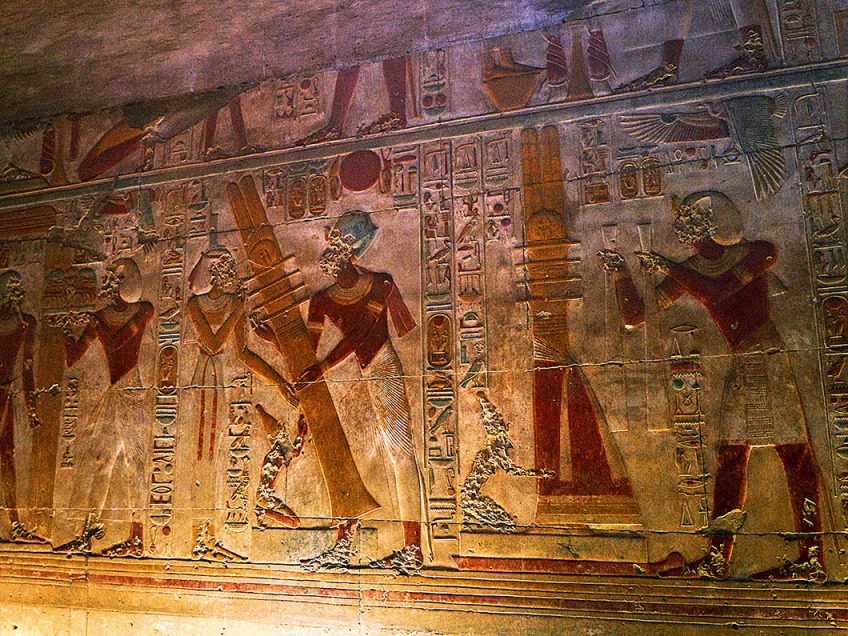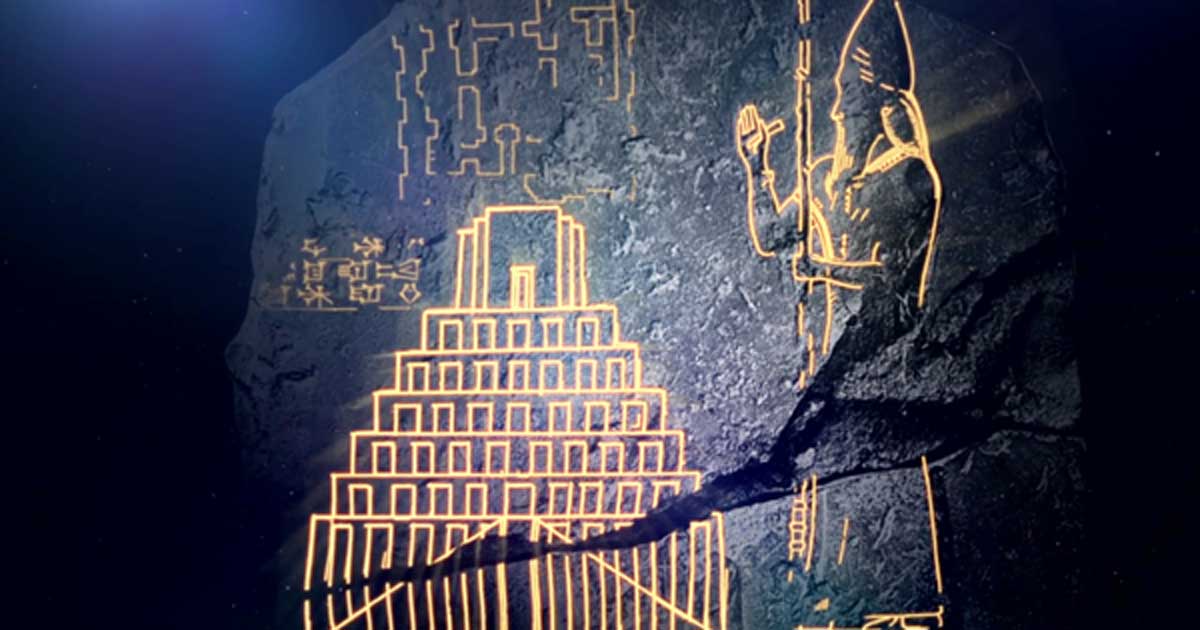by
Damien F. Mackey
Whilst, in conventional terms, Nebuchednezzar II did not begin to reign until c. 605 BC, about 80 years after the death of Hezekiah (c. 686 BC), according to the revision proposed [here], Nebuchednezzar’s youth would have overlapped with the late reign of Hezekiah.
“Bagoas” and Esarhaddon
Little did I realise at the time, when invited in the Year 2000 by professor Rifaat Ebied to choose between the era of King Hezekiah and the era of King Josiah for the subject matter of a doctoral thesis (for more on this, see:
King Hezekiah of Judah and his amazing contemporaries
that Hezekiah’s and Josiah’s were in fact the very same era, that Hezekiah was Josiah.
My article:
explains the revision that I have more recently set out for the later kings of Judah.
But so radical a revision of Judah must needs be accompanied by, for instance, a similarly radical revision of whoever Assyro-Babylonian dynasts were contemporaneous with these kings of Judah. Amongst the articles that I have written on that score are:
Aligning Neo Babylonia with Book of Daniel. Part One: Shortening the Chaldean Dynasty
and the more important:
Aligning Neo-Babylonia with Book of Daniel. Part Two: Merging late neo-Assyrians with Chaldeans
The upshot of all this is, in the case of the Nebuchednezzar the Great, that his life now comes within close range of King Hezekiah.
Whilst, in conventional terms, Nebuchednezzar II did not begin to reign until c. 605 BC, about 80 years after the death of Hezekiah (c. 686 BC), according to the revision proposed above, Nebuchednezzar’s youth would have overlapped with the late reign of Hezekiah.
And, if the Jewish tradition be correct, that the future Nebuchednezzar II himself had participated in Sennacherib’s ill-fated campaign at the time of king Hezekiah - quite a chronological impossibility in conventional terms - then Nebuchednezzar may even be the wrongly-named “Bagoas”, who was second-in-command to (Ashur-nadin-shumi =) “Holofernes” himself. See e.g. my article:
An early glimpse of Nebuchednezzar II?
Now, if Sennacherib’s eldest son, Ashur-nadin-shumi, was “Holofernes”, the leader of the disastrous invasion of Israel by the 185,000 Assyrians, then who was – where was? – Esarhaddon in all of this, he being the son who would most unexpectedly succeed Sennacherib? Well, if Nebuchednezzar had in fact been personally involved in this campaign, as according to Jewish tradition, then that, too, is where we must find Esarhaddon, at least if I am correct that:
"As we know from the correspondence left by the roya1 physicians and exorcists … [Esarhaddon’s] days were governed by spells of fever and dizziness, violent fits of vomiting, diarrhoea and painful earaches. Depressions and fear of impending death were a constant in his life. In addition, his physical appearance was affected by the marks of a permanent skin rash that covered large parts of his body and especially his face". (Karen Radner)
In a multi-part “Nebuchednezzar syndrome” series, I have listed and described a number of Assyro-Babylonian (and even supposedly Persian) kings who have the earmarks of the biblico-historical Nebuchednezzar: dreams; illness-madness; interfering with rubrics; building Babylon; invasion of Egypt, megalomania; fiery furnace; revival and ‘conversion’:
Esarhaddon, in particular, seems to ‘scream out’ to be identified with Nebuchednezzar.
It was only late in this series that I realised that I even had to include the Babylonian, Nabopolassar, in the list. He is generally considered to have been the father of Nebuchednezzar. “Nebuchednezzar syndrome” features (not listed above) that I began to pick up with Nabopolassar were other common ones such as, not expecting to be named king; and an almost fanatical precision about foundation alignment.
Ashurbanipal; Nabonidus; Cambyses
“Fragments of a Scroll found near the Dead Sea likely makes an amazing reference to
the prophet Daniel. The fragment, found in a cave located along the cliffs overlooking
the Dead Sea, is known as the "Prayer of Nabonidus."
biblehistory.net
Apart from the many “Nebuchednezzar syndrome” parallels, see Part One:
Ashurbanipal and Nabonidus
and has striking likenesses to the biblical “Nebuchednezzar”:
Does King Nabonidus reflect Daniel's "Nebuchednezzar"?
In an intriguing article, “The Prophet Daniel”:
we read this:
Fragments of a Scroll found near the Dead Sea likely makes an amazing reference to the prophet Daniel. The fragment, found in a cave located along the cliffs overlooking the Dead Sea, is known as the "Prayer of Nabonidus." The artifact, which doesn't seem to draw much attention in Biblical archaeology circles, is actually very important. First of all it is a copy of a scroll written in the language of Babylon, Aramaic, not Hebrew as in the case of the majority of the Dead Sea Scrolls. Aramaic was the language spoken in ancient Babylon. The reason this is important is because Daniel the prophet was educated in the Aramaic language of Babylon. We found this stated in Daniel 1:4 and in Daniel 2:4.
….
Prayer of Nabonidus
There is also evidence that the original book of Daniel from chapters 2:4 through chapters 7:28 were also written in this ancient Aramaic language known as Chaldee (the language of Babylon), the same language used in Babylonian documents of the 7th century B.C.
This evidence comes from other Dead Sea Scroll fragments found of the book of Daniel. These fragments confirm the fact that the events spoken of in the book of Daniel were written down by Daniel in ancient Aramaic during the time of his captivity in Babylon.
Now the text of the "Prayer of Nabonidus" is an account of the Babylonian king Nabonidus, the father of the Biblical ruler Belshazzar. In his account, Nabonidus had come down with a disease while away from Babylon at his stay at the oasis city of Teman in Saudi Arabia. He prayed to his false gods and idols of silver, gold, wood, stone and clay, but to no avail. So he sought the help from a Jew who was part of the exiles taken into captivity back to Babylon. This Jew tells Nabonidus to worship and honor the Most High God instead of his foreign gods.
This Jew, referred to here, is most likely the prophet Daniel. We know from Scripture that Daniel was still alive during the reign of Nabonidus and his son Belshazzar. Scripture also indicates that the Queen of Babylon, likely the Queen of Nabonidus, Belshazzar's mother, believed that Daniel was, in her words, "A man in the kingdom in whom dwelt the Spirit of the Holy God, . . . like the wisdom of the gods whom Nebuchadnezzar your father (grandfather) - your father the king (Nabonidus) - made him chief of the magicians. astrologers, Chaldeans, and soothsayers." Daniel 5:11
|
So Daniel was considered to be the chief man to go to under both king Nebuchadnezzar and king Nabonidus when dealing with issues concerning God.
|
Now, these fragments of the scroll give evidence outside of the Bible that Nabonidus likely called upon Daniel's advise after his prayers to his false gods had failed.
Below is one English translation of the scroll fragments known as the Prayer of Nabonidus 4Q242.
|
|
1) The words of the prayer which Nabonidus, king of Babylon, the great king, prayed when he was stricken
|
2) with an evil disease by the decree of God in Teman. I Nabonidus was stricken with an evil disease
|
3) for seven years, and from that time I was driven and I prayed to the Most High
|
4) and, as for my sin, he forgave it. A diviner – who was a Jew of the Exiles – came to me and said:
|
5) ‘Recount and record these things in order to give honor and greatness to the name of the God Most High.’ And thus I wrote: I
|
6) was stricken with an evil disease in Teman by the decree of the Most High God, and, as for me,
|
7) seven years I was praying to gods of silver and gold, bronze, iron,
|
8) wood, stone and clay, because I thought that they were gods. ….
|
|
|
|
| | | | | | | | | | | | | | | | | |
| |
Cambyses too, apart from having some of the earmarks of “Nebuchednezzar syndrome”: madness; conquest of Egypt, had the alternative name of “Nebuchadnezzar”:
Cambyses also named Nebuchadnezzar? Part Three: ‘Sacred disease’ (read madness) of King Cambyses
And, perhaps further strengthening the contemporaneity of Cambyses with the neo-Assyrian era, I have suggested an identification of the important official in Egypt, Udjahorresne[t], who acted as the king’s guide and mentor there, with Ushanahuru, the son (possibly Crown Prince) of the great Tirhakah of Egypt/Ethiopia:
Cambyses mentored in Egypt by Udjahorresne. Part One: Too many invasions of Egypt
Cambyses mentored in Egypt by Udjahorresne. Part Two: Meeting and identifying Udjahorresne
|
|
‘Artaxerxes king of Babylon’
‘But in all this time was not I at Jerusalem: for in the two and thirtieth year of Artaxerxes king of Babylon came I to the king, and after certain days obtained I leave of the king’.
Nehemiah 13:6
There are two kings “Artaxerxes” with whom Nebuchednezzar appears to have a greater, or lesser, connection.
The first is Artaxerxes III ‘Ochus’, who I claim to be another of those fictitious, late production characters, a composite based upon real Mesopotamian kings – most notably Sennacherib and Nebuchednezzar.
Emmet Sweeney had, in the 1990’s, identified Artaxerxes III ‘Ochus’ with Nebuchednezzar (see E. Scott’s Hatshepsut, Queen of Sheba, pp. 170-171)
For my own articles on the subject, see e.g:
Artaxerxes III and Judith
and:
"Nebuchednezzar Syndrome": dreams, illness-madness, Egyptophobia. Part Two: Ashurbanipal; Nabonidus; Cambyses; Artaxerxes III
and:
Medo-Persian History Archaeologically Light. Part Three: Artaxerxes III ‘Ochus’
The Artaxerxes of the Book of Nehemiah is quite a different matter.
He is a real flesh and blood king, who has been badly mis-identified and mis-dated.
He is, again, Nebuchednezzar the great King of Babylon. See my multi-part series:
Governor Nehemiah's master "Artaxerxes king of Babylon". Part One: Nehemiah and that ‘broken down wall’
commencing with:
Finally, also to be considered for a ‘face’ of King Nebuchednezzar - given the need to fold the Middle Babylonian period with the Neo Babylonian period - is Nebuchednezzar I.
This is what I wrote on the matter in:
King Hezekiah of Judah and his amazing contemporaries
…..
My other move on Sennacherib at that time involved the necessary (in terms of the revision) folding of Middle Assyro-Babylonian history with Neo Assyro-Babylonian history.
Revised attempts at this so far do not seem to have been very successful.
I thought that I had found the perfect solution with my folding of the mighty Middle Babylonian king, Nebuchednezzar I, conventionally dated to the C12th BC - he, I then declared to have been ‘the Babylonian face’ of Sargon II/Sennacherib.
Such an identification, which seemed to have massive support from the succession of Shutrukid-Elamite kings of the time having names virtually identical to the succession of Elamite kings at the time of Sargon II/Sennacherib … had the further advantage of providing Sargon II/Sennacherib with the name, “Nebuchednezzar”, just as the Assyrian king is named in the Book of Judith (“Nebuchadnezzar”).
My more recent collapsing of the late neo-Assyrian era into the early neo-Babylonian era has caused me to drop the identification of Nebuchednezzar I with Sargon II/Sennacherib:
More appropriately, now, Nebuchednezzar I might be found to have been Nebuchednezzar II.
Fortunately though, with this tightened chronology, the impressive Shutrukid-Elamite parallels that I had established in my thesis might still remain viable.
Having rejected my former folding of Nebuchednezzar I with Sargon II/Sennacherib the question must be asked, ‘At what point does Middle fold with Neo?’
This all awaits further potential development.






